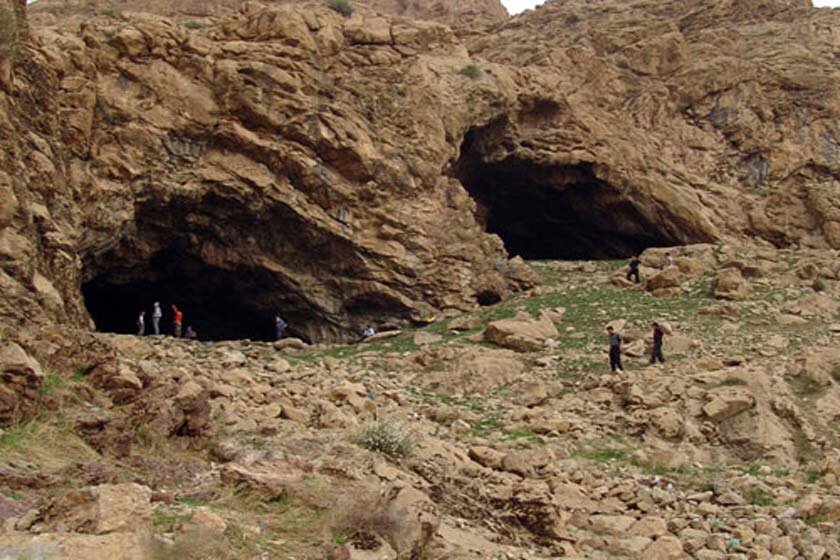Discover Neanderthal footprints at Iran’s Do-Ashkaft Cave

TEHRAN - In many ways, Neanderthals are still considered a mystery for many people. Neanderthals existed for about 200,000 years longer than we modern humans (Homo sapiens) have been alive. Evidence of their existence vanished around 28,000 years ago – giving us an estimate for when they may, finally, have died off.
There are relics and fossil evidence from Neanderthals in several parts of the Iranian plateau, including Do-Ashkaft Cave, the subject of this note.
A Middle Paleolithic cave site, Do-Ashkaft Cave is situated north of Kermanshah, near Taq-e Bostan, about 1,600 m above sea level. Its entrance faces south of Meywala Mount, overlooking the national park of Kuhestan.
The main chamber of the cave is 23 meters deep and 15 meters wide. The floor is covered with debris from modern use as a winter campsite by sheep and goat herders. Next to the mouth of the main cave, there is a small spring with a regular flow even in warm, dry summers, which seems to have played a major role in the geomorphological and archaeological history of the site.
The site was first visited in 1996 by Iranian researchers F. Biglari and S. Heydari-Guran and during the following four years, a series of surface surveys were made at one-month intervals, which resulted in a rich collection of Middle Paleolithic lithic artifacts.
Exposed breccia at the entrance and some patches on the walls indicate lateral percolation of water into the cave sediments. In some places, this breccia is about two meters above the present floor. The presence and position of the breccia suggest that a substantial amount of the cave sediments may have been washed away. The breccia at the entrance is rich in fragmentary animal bones, charcoal, and flint artifacts. Some Middle Palaeolithic artifacts, including a few side-scrapers and a Mousterian point, have been recovered from this breccia.
Animal bones are extremely fragmentary and some are burned, suggesting human involvement in their accumulation during the Mousterian occupation. They include a fragment of the right mandible of an adult specimen and an upper third right molar of a sub-adult ruminant, both allocated to wild Caprine (sheep or goat).
Thousands of pieces of flint have been collected from the entrance area and the talus slope. Since there is no sign of later industries, except a few bladelets and an end-scraper, the surface collection seems to be unmixed and to represent atypical Zagros Mousterian industry.
Primary observations indicate that lithic artifacts were predominantly made from raw material procured near the site, a fine glossy opaque red and green material which seems to be jasper. Survey located outcrops of this material and its two other variants along the southern slope of Maiwaleh Mountain.
The lithic assemblage at Do-Ashkaft comprises tools, flakes, trimming flakes, shatters, and cores. An emphasis on heavily retouched pieces characterizes the assemblage. Such heavy reduction and utilization are typical of the Zagros Mousterian assemblages. Single and convergent scraper (including Mousterian points) constitutes the largest percentage of the tools, followed by other scraper types, retouched pieces, notches/denticulates, burins, and miscellaneous artifacts.
To gather information about the distribution of other possible Palaeolithic sites in the vicinity. An area of about seven by one km was surveyed in 1999 and a total of 14 caves and rock-shelters with Upper Palaeolithic and later lithic assemblages were recorded. The only probable Middle Palaeolithic artifacts found include a convergent scraper from an abandoned limestone quarry and a few artifacts including a Mousterian point in a geological section. This section and another one near Tang-e Kenesht were recorded and sampled by S. Heydari. His study provides a paleoenvironmental sequence for the region with a late Middle Pleistocene to Holocene age.
A study, published in the Journal of Human Evolution in 2019, suggests that Neanderthals were roaming at the Iranian Zagros Mountain sometimes between 40 to 70 thousand years ago, it also refers to a human tooth discovered in 1999 in a cave called Wezmeh near Kermanshah, noting the tooth that previously thought to be modern human belongs to a Neanderthal child
In taxonomy, Homo sapiens is the only extant human species. The name is Latin for “wise man” and was introduced in 1758 by Carl Linnaeus (who is himself also the type specimen). Neanderthals are an extinct species or subspecies of archaic humans in the genus Homo, who lived within Eurasia from circa 400,000 until 40,000 years ago.
AFM/MG
Leave a Comment